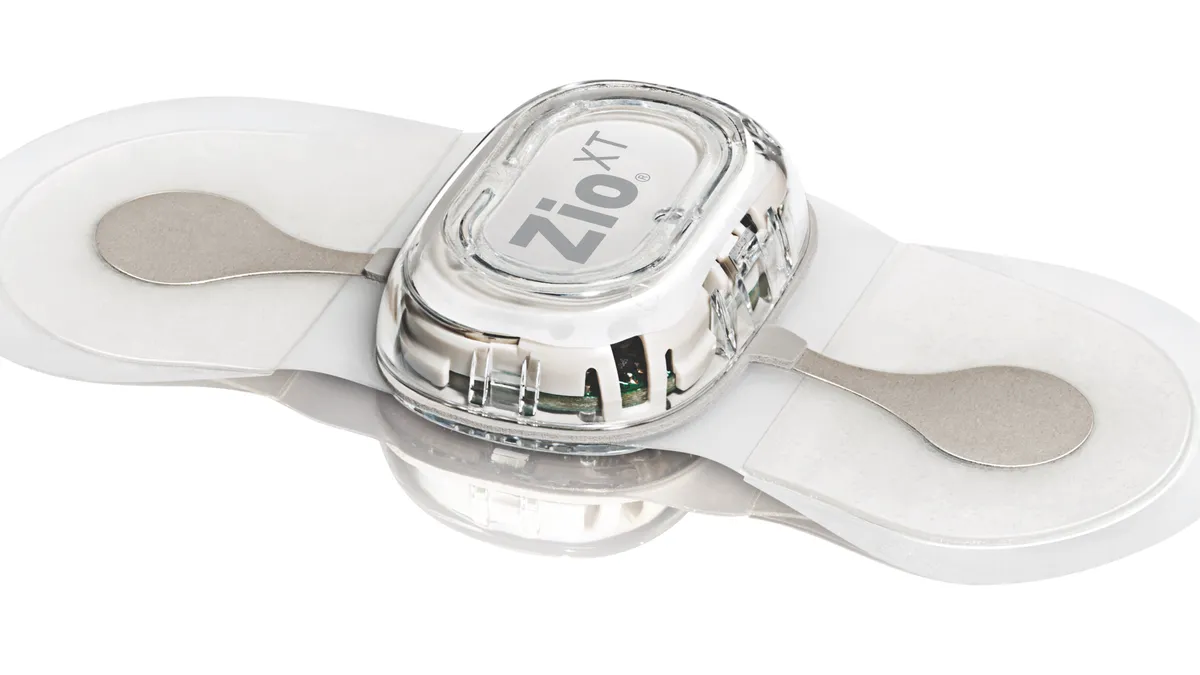iRhythm Technologies grew revenue by nearly 26% year over year in the second quarter, fueled by rising user registrations, leading the company to raise its full-year revenue forecast.
CEO Quentin Blackford said on a Thursday after-market earnings call that the company had a record number of registrations last quarter despite a “difficult market environment.” New account openings rose 22% compared to the first quarter of 2022, he said.
Expanding to new prescription sites such as primary care offices helped increase the number of devices sold in the quarter, Blackford said, a strategy the company plans to expand.
Primary care doctors are showing more interest in using iRhythm’s cardiac monitors in their practices, and insurers have told the company they see this trend growing, he added.
“We've got a strong belief that the primary care physician space will open up, and we're seeing that begin to be validated in our new account openings, where a higher and higher mix is coming from that primary care channel,” Blackford said. “It’s validating our belief, our thesis that that will be a significant space for us into the future.”
While individual primary care offices have fewer cardiac patients than cardiology practices have, there are more primary care offices.
William Blair analysts estimated in a July note that up to 12 million patients a year in the primary care channel could qualify for cardiac monitoring.
“This is larger than iRhythm’s estimate for 8 million-plus patients and more than double today’s market of 5.6 million annual tests, pointing to a meaningful long-term market for cardiac monitoring, though iRhythm will admittedly need to execute on market development to unlock the full potential,” the analysts wrote.
The cardiac monitor maker grew year over year by 25.6% to $102.1 million last quarter. Still, iRhythm reported a net loss of $23.9 million, compared to $17.4 million in the prior year’s quarter.
iRhythm increased the low end of its revenue forecast for 2022 by $5 million, raising it to a range of $415 million to $420 million compared to a previous range of $410 million to $420 million. The new forecast reflects year-over-year growth of 29% to 30%.
Its stock price was up by 3.5% to nearly $159 Friday morning.
Douglas Devine, iRhythm’s CFO and chief operating officer, told investors that despite raising the revenue forecast, third quarter volumes are expected to be flat compared to the second quarter due to healthcare staffing shortages. A high level of patient and provider vacations, meanwhile, could also slow down prescriptions and new accounts, he added.
Blackford also said that the company is already seeing the typical slowdown in the summer months.
As iRhythm continues to transition processing claims through National Government Services (NGS), a regional Medicare rate setter, the company expects a $7 million revenue benefit from the move in the second half of the year, roughly evenly split between the third and fourth quarters, according to Devine.
NGS, a Medicare Administrative Contractor (MAC) serving the suburban Chicago area, updated its rates in May to about $100 more than iRhythm’s primary MAC, Novitas Solutions. iRhythm said on a May earnings call that it will begin transferring Medicare claims to be processed through NGS to capitalize on the higher rates, a move following a pricing saga that plagued the company throughout 2021.
iRhythm is also awaiting a finalized Physician Fee Schedule from the Centers for Medicare and Medicaid Services, which will come in late 2022. The CMS proposed national rates for cardiac monitoring services, potentially ending a yearslong effort for iRhythm.
Blackford said the agency’s pricing data implies payment rates between $207 and $295 across the regions in which iRhythm submits Medicare claims. The CEO added that there will be “an immaterial impact” on the company’s overall average sales price in 2023 compared to 2022.
The company also announced that it will hold an investor day event on Sept. 21.











